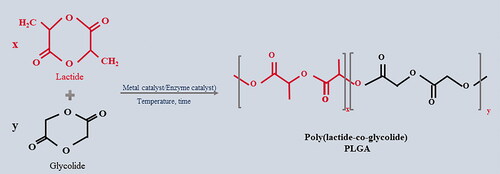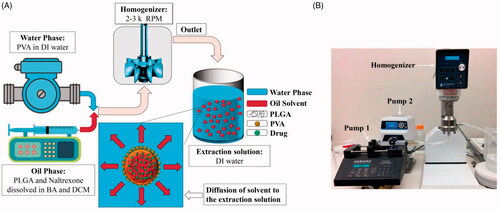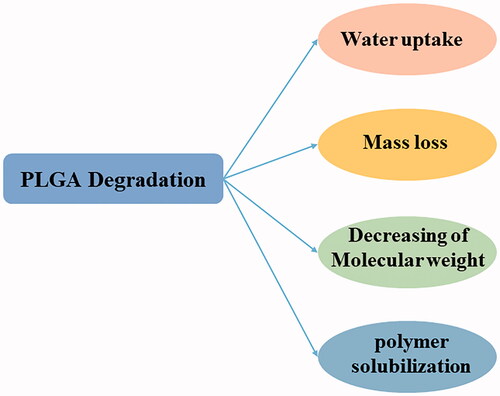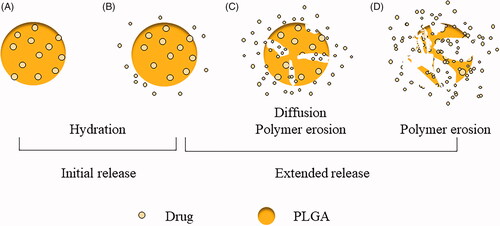Figures & data
Figure 3. Chemical structure of poly(lactic-co-glycolic acid) and its monomers, and the synthesis of PLGA.

Figure 6. (A) Schematic of naltrexone-loaded PLGA generation using an in-line emulsification-extraction process. (B) Experimental set-up used to generate particles by pumping both oil- and aqueous-phases into the homogenizer and transferring the emulsion to the extraction solution (Sharifi et al., Citation2020).





